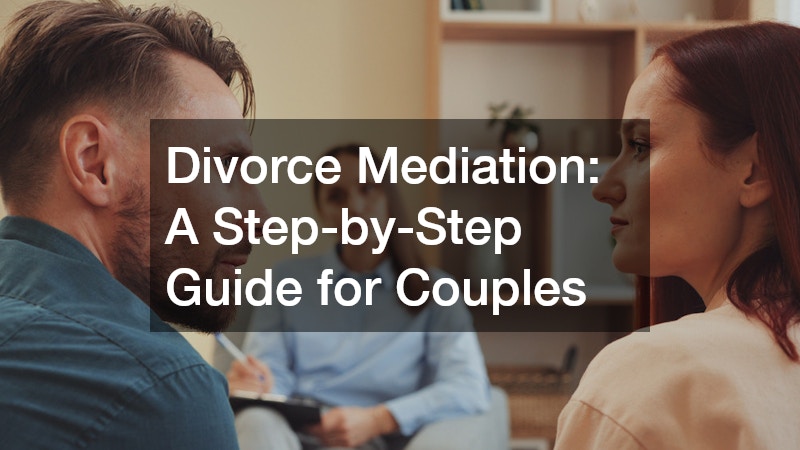Divorce mediation is an essential tool for couples seeking to manage their separation process amicably. It presents a structured environment where both parties can communicate openly, facilitated by a neutral third-party mediator.
This guide provides a step-by-step approach to navigating divorce mediation, ensuring both parties can reach a fair and sustainable agreement.
Understanding Divorce Mediation
Divorce mediation is a voluntary process where couples negotiate the terms of their divorce with the help of a professional mediator. Unlike litigation, which can be adversarial and costly, mediation focuses on collaboration and mutual agreement. This process often results in solutions that meet the unique needs of both parties and can be more respectful of all involved.
The role of the mediator is crucial in guiding the discussion and helping couples identify their priorities and concerns. Mediators are trained professionals who remain neutral throughout the process, facilitating a dialogue that encourages compromise and understanding. This allows couples to craft personalized solutions instead of having terms imposed by a court.
The success of divorce mediation largely depends on the willingness of both parties to engage in open and honest communication. Entering the process with a mindset geared towards cooperation rather than contention significantly improves the chances of a successful mediation. Avoiding conflict and focusing on resolution can alleviate emotional stress and lead to more satisfactory outcomes for both parties.
Preparing for Mediation Sessions
Proper preparation is key to a productive mediation session. Couples should begin by gathering all necessary documentation, including financial records, asset lists, and any pertinent legal documents. This information provides a clear picture of the couple’s financial situation, which is critical for making informed decisions during mediation.
Emotional preparation is equally important as logistical readiness. Each party should take time to reflect on their goals, priorities, and areas where they might be willing to compromise. Understanding one’s limits and flexibility can prevent unnecessary disputes and facilitate a smoother mediation process.
Couples should also consider consulting with individual legal advisors before mediation to understand their rights and responsibilities. Having a legal perspective can provide valuable insights and ensure that any agreements made are legally sound and sustainable in the long term. This step can also provide peace of mind, enabling couples to approach mediation with confidence.
The Mediation Process
The mediation process typically begins with a joint session where both parties outline their concerns and desired outcomes. The mediator facilitates dialogue, ensuring each party has the opportunity to speak and be heard. This initial discussion sets the tone for the mediation sessions and establishes a collaborative environment for finding solutions.
Subsequent sessions focus on specific issues such as asset division, child custody, and support arrangements. The mediator guides the conversation, helping the couple brainstorm creative solutions that meet both parties’ needs. As sessions progress, agreements are refined and documented, forming the basis of the divorce settlement.
The final stage of mediation involves reviewing the agreements to ensure all parties understand and accept the terms. The mediator assists in creating a comprehensive final agreement, which both parties sign before it is submitted for court approval. This step solidifies the mediated settlement, concluding the process on a note of mutual agreement and closure.
Benefits of Divorce Mediation
Divorce mediation offers numerous benefits over traditional litigation. It is generally more cost-effective, as it reduces legal fees and court costs. Additionally, mediation is typically faster and less stressful, helping both parties avoid the drawn-out process and emotional turmoil of a courtroom battle.
Mediation empowers couples to make their own decisions regarding their future, rather than leaving them in the hands of a judge. This autonomy often leads to more satisfying outcomes, as agreements are tailored to the specific needs of the couple. As a result, compliance rates with mediated agreements are generally higher than court-imposed resolutions.
The collaborative nature of mediation also fosters a better long-term relationship between the divorcing parties. This can be particularly beneficial when children are involved, as it sets a foundation for cooperative co-parenting. By focusing on communication and compromise, mediation can transform a contentious separation into a respectful and constructive process for all involved.



